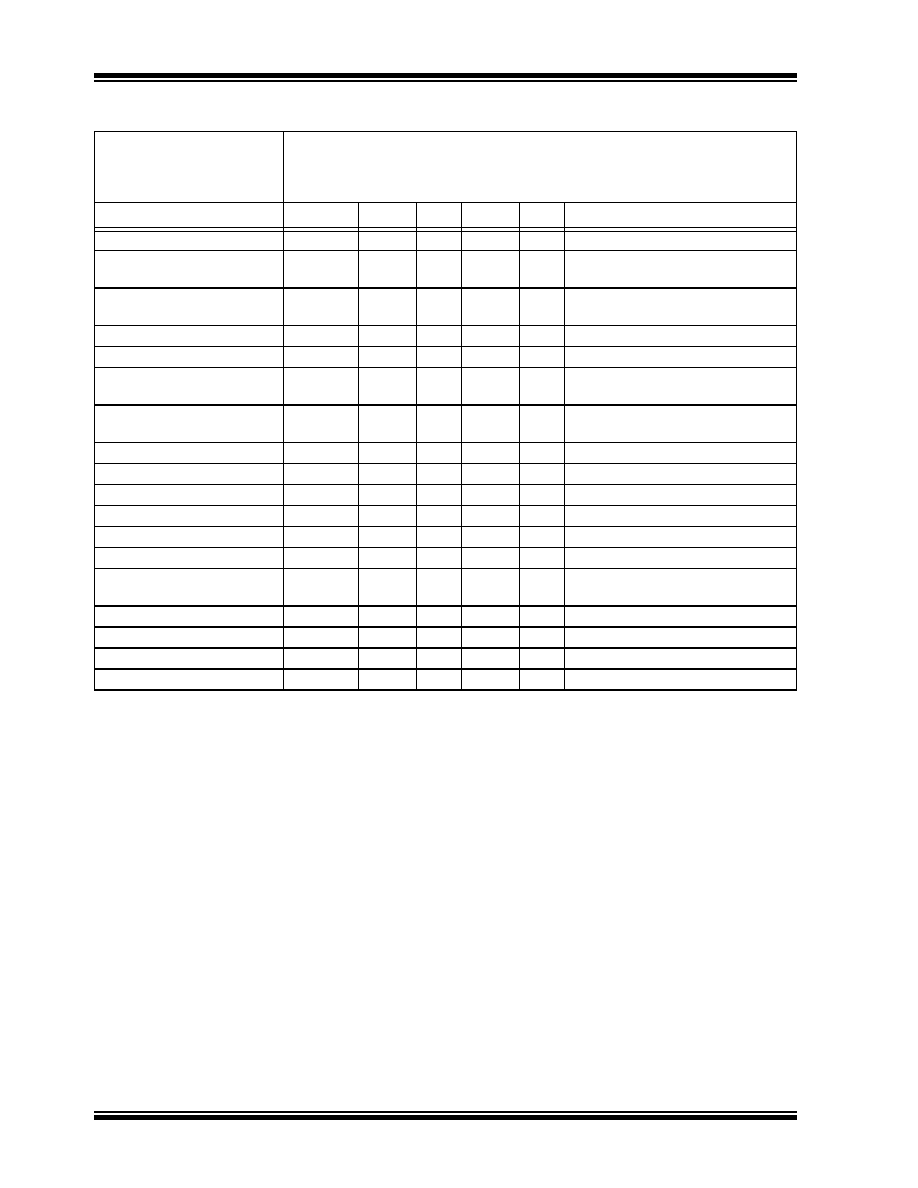 | –≠–ª–µ–∫—Ç—Ä–æ–Ω–Ω—ã–π –∫–æ–º–ø–æ–Ω–µ–Ω—Ç: MCRF355/W | –°–∫–∞—á–∞—Ç—å:  PDF PDF  ZIP ZIP |

2002 Microchip Technology Inc.
DS21287F-page 1
MCRF355/360
Features
∑ Carrier frequency: 13.56 MHz
∑ Data modulation frequency: 70 kHz
∑ Manchester coding protocol
∑ 154 bits of user memory
∑ On-board 100 ms SLEEP timer
∑ Built-in anti-collision algorithm for reading up to
multiple tags in the same RF field
∑ "Cloaking" feature to minimize the detuning
effects of adjacent tags
∑ Internal 100 pF resonant capacitor (MCRF360)
∑ Read only device in RF field
∑ Long read range
∑ Rewritable with contact programmer or factory-
programmed options
∑ Very low power CMOS design
∑ Die, wafer, bumped wafer, COB, PDIP or SOIC
package options
Application
∑ Book store and library book ID
∑ Airline baggage tracking
∑ Toys and gaming tools
∑ Access control/asset tracking
∑ Applications for reading multiple tags and long
read range
Package Type
RF Carrier
Reader
MCRF355/360
Modulated
RF Data
Ant. A
Vss
Ant. B
Read range: ~ up to 1.5 meters depending on tag size
and system requirements.
PDIP/SOIC
V
PRG
V
DD
1
2
3
4
8
7
6
5
CLK
Ant. A
NC
NC
Ant. B
V
SS
5 mm
8m
m
Thickness = 0.4 mm
Antenna Coil Connection
MCRF355 COB
Note:
Pins 1, 2, 5 and 8 are for device testing
and contact programming.
Pins 3, 5 and 6 are for external antenna
connection.
NC = Not connected
13.56 MHz Passive RFID Device with Anti-Collision Feature

MCRF355/360
DS21287F-page 2
2002 Microchip Technology Inc.
Description
The MCRF355 and MCRF360 are Microchip's
13.56 MHz micro
IDTM family of RFID tagging devices.
They are uniquely designed read-only passive Radio
Frequency Identification (RFID) devices with an
advanced anti-collision feature. They are programma-
ble with a contact programmer. The device is powered
remotely by rectifying RF magnetic fields that are trans-
mitted from the reader.
The device has a total of six pads (see Figure 1-1).
Three (ant. A, B, V
SS
) are used to connect the external
resonant circuit elements. The additional three pads
(V
PRG
, CLK, V
DD
) are used for programming and test-
ing of the device.
The device needs an external resonant circuit between
antenna A, B, and V
SS
pads. The resonant frequency
of the circuit is determined by the circuit elements
between the antenna A and V
SS
pads. The resonant
circuit must be tuned to the carrier frequency of the
reader for maximum performance. The circuit element
between the antenna B and V
SS
pads is used for data
modulation. See Application Note AN707 for further
operational details.
The MCRF360 includes a 100 pF internal resonant
capacitor (100 pF). By utilizing this internal resonant
capacitor, the device needs external coils only for the
resonant circuit. Examples of the resonant circuit con-
figuration for both the MCRF355 and MCRF360 are
shown in Section 3.0.
When a tag (device with the external LC resonant cir-
cuit) is brought to the reader's RF field, it induces an RF
voltage across the LC resonant circuit. The device rec-
tifies the RF voltage and develops a DC voltage. The
device becomes functional as soon as V
DD
reaches the
operating voltage level.
The device includes a modulation transistor that is
located between antenna B and V
SS
pads. The transis-
tor has high turn-off (a few M
) and low turn-on (3 )
resistance. The turn-on resistance is called modulation
resistance (R
M
). When the transistor turns off, the res-
onant circuit is tuned to the carrier frequency of the
reader. This condition is called uncloaking. When the
modulation transistor turns on, its low turn-on resis-
tance shorts the external circuit element between the
antenna B and V
SS
. As a result, the resonant circuit no
longer resonates at the carrier frequency. This is called
cloaking.
The induced voltage amplitude (on the resonant circuit)
changes with the modulation data: higher amplitude
during uncloaking (tuned), and lower amplitude during
cloaking (detuned). This is called "amplitude modula-
tion" signal. The receiver channel in the reader detects
this amplitude modulation signal and reconstructs the
modulation data.
The occurrence of the cloaking and uncloaking of the
device is controlled by the modulation signal that turns
the modulation transistor on and off, resulting in com-
munication from the device to the reader.
The data stream consists of 154 bits of Manchester-
encoded data at a 70 kHz rate. The Manchester code
waveform is shown in Figure 2-2. After completion of
the data transmission, the device goes into SLEEP
mode for about 100 ms. The device repeats the trans-
mitting and SLEEP cycles as long as it is energized.
During the SLEEP time the device remains in an
uncloaked state.
SLEEP time is determined by a built-in low-current
timer. There is a wide variation of the SLEEP time
between each device. This wide variation of SLEEP
time results in a randomness of the time slot. Each
device wakes up and transmits its data in a different
time slot with respect to each other. Based on this sce-
nario, the reader is able to read many tags that are in
the same RF field.
The device has a total of 154 bits of reprogrammable
memory. All bits are reprogrammable by a contact pro-
grammer. A contact programmer (part number
PG103003) is available from Microchip Technology Inc.
Factory programming prior to shipment, known as
Serialized Quick Turn Programming
SM
(SQTP
SM
), is
also available. The device is available in die, wafer,
bumped wafer, wafer-on-frame, PDIP, SOIC and COB
modules.
Note:
Information provided herein is preliminary
and subject to change without notice.

2002 Microchip Technology Inc.
DS21287F-page 3
MCRF355/360
1.0
ELECTRICAL CHARACTERISTICS
TABLE 1-1:
ABSOLUTE RATINGS
TABLE 1-2:
DC CHARACTERISTICS
Parameters
Symbol
Min
Max
Units
Conditions
Coil Current
I
PP
_
AC
--
40
mA
Peak-to-Peak coil current
Assembly temperature
T
ASM
--
265
∞C
< 10 sec
Storage temperature
T
STORE
-65
150
∞C
--
All parameters apply
across the specified
operating ranges, unless
otherwise noted.
Commercial (C):
T
AMB
= -20
o
C to 70
o
C
Parameters
Symbol
Min
Typ
Max
Units
Conditions
Reading voltage
V
DDR
2.4
--
--
V
V
DD
voltage for reading
Hysteresis voltage
V
HYST
--
TBD
--
TBD
--
Operating current
I
DDR
--
7
10
µA
V
DD
= 2.4V during reading at
25∞C
Testing voltage
V
DDT
--
4
--
V
--
Programming voltage:
High level input voltage
Low level input voltage
High voltage
V
IH
V
IL
V
HH
0.7 * V
DDT
--
--
--
--
20
--
0.3 * V
DDT
--
V
V
V
External DC voltage for
programming and testing
Current leakage during
SLEEP time
I
DD
_
OFF
--
10
--
nA
(Note 1)
Modulation resistance
R
M
--
3
4
DC resistance between Drain and
Source gates of the modulation
transistor (when it is turned on)
Pull-Down resistor
R
PDW
5
8
--
k
CLK and V
PRG
internal pull-down
resistor
Note 1: This parameter is not tested in production.

MCRF355/360
DS21287F-page 4
2002 Microchip Technology Inc.
TABLE 1-3:
AC CHARACTERISTICS
All parameters apply across
the specified operating
ranges, unless otherwise
noted.
Commercial (C):
T
AMB
= -20
o
C to 70
o
C
Parameters
Symbol
Min
Typ
Max
Units
Conditions
Carrier frequency
F
C
13.56
MHz
Reader's transmitting frequency
Modulation frequency
F
M
58
70
82
kHz
Manchester coding, at V
DD
= 2.6 V
DC
- 5 V
DC
Coil voltage during reading
V
PP
_
AC
4
--
--
V
PP
Peak-to-Peak AC voltage across the
coil during reading
Coil clamp voltage
V
CLMP
_
AC
--
32
--
V
PP
Peak-to-Peak coil clamp voltage
Test mode clock frequency
F
CLK
115 500
kHz
25∞C
SLEEP time
T
OFF
50
100
200
ms
Off time for anti-collision feature, at
25∞C and V
DD
= 2.5 V
DC
Internal resonant capacitor
(MCRF360)
C
RES
85
100
115
pF
Internal resonant capacitor between
Antenna A and V
SS
, at 13.56 MHz
Write/Erase pulse width
T
WC
--
2
10
ms
Time to program bit, at 25∞C
Clock high time
T
HIGH
--
4.4
--
µs
25∞C for testing and programming
Clock low time
T
LOW
--
4.4
--
µs
25∞C for testing and programming
STOP condition pulse width
T
PW
:
STO
--
1000
--
ns
25∞C for testing and programming
STOP condition setup time
T
SU
:
STO
--
200
--
ns
25∞C for testing and programming
Setup time for high voltage
T
SU
:
HH
--
800
--
ns
25∞C for testing and programming
High voltage delay time
T
DL
:
HH
--
800
--
ns
Delay time before the next clock, at
25∞C for testing and programming
Data input setup time
T
SU
:
DAT
--
450
--
ns
25∞C for testing and programming
Data input hold time
T
HD
:
DAT
--
1.2
--
µs
25∞C for testing and programming
Output valid from clock
T
AA
--
200
--
ns
25∞C for testing and programming
Data retention
--
200
--
Years For T < 120∞C

2002 Microchip Technology Inc.
DS21287F-page 5
MCRF355/360
TABLE 1-4:
PAD COORDINATES (MICRONS)
FIGURE 1-1:
DIE LAYOUT
Pad Name
Lower
Left X
Lower
Left Y
Upper
Right X
Upper
Right Y
Passivation Openings
Pad
Center X
Pad
Center Y
Pad Width
Pad Height
Ant. A
-610.0
489.2
-521.0
578.2
89
89
-565.5
533.7
Ant. B
-605.0
-579.8
-516.0
-490.8
89
89
-560.5
-535.3
V
SS
-605.0
-58.2
-516.0
30.8
89
89
-560.5
-13.7
V
DD
463.4
-181.4
552.4
-92.4
89
89
507.9
-136.9
CLK
463.4
496.8
552.4
585.8
89
89
507.9
541.3
V
PRG
463.4
157.6
552.4
246.6
89
89
507.9
202.1
Note 1: All coordinates are referenced from the center of the die. The minimum distance between pads (edge to
edge) is 10 mil.
2: Die Size = 1.417 mm x 1.513 mm = 1417
µm x 1513 µm = 55.79 mil x 59.57 mil
1157.4
1162.4
1
158
767.2
458.4
432.6
250.2
250
1417
CLK
V
PRG
V
DD
1513
X
Y (Notch edge of wafer)
Ant A
V
SS
Ant B
x
x
x
x
x
x
Die size before saw:
Die size after saw:
Bond pad size:
1417
µm x 1513 µm
1353.8
µm x 1450.34 µm
89
µm x 89 µm
55.79 mil x 59.57 mil
53.3 x 57.1 mil
3.5 mil x 3.5 mil




